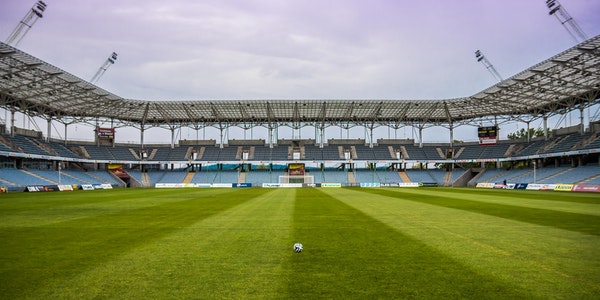- Adaptive Lighting for Smart Environments
Contextual Awareness: AI-driven lighting systems leverage data from IoT devices and smart sensors to adapt lighting to changing environmental conditions, user activities, and preferences.
Integration with Smart Building Systems: Lighting systems integrate with building management systems to coordinate with HVAC, security, and other building systems for seamless operation and energy optimization.
- Continuous Improvement
Feedback Loops: AI-driven lighting systems continuously learn and adapt based on feedback from users, sensors, and performance metrics, refining their algorithms to optimize lighting performance and user satisfaction over time.
Iterative Development: Lighting manufacturers and developers iterate on AI algorithms and system designs based on real-world data and user feedback, driving ongoing innovation and improvement in lighting technology.
Conclusion
Enhanced data analytics and AI-driven lighting adjustments empower lighting systems to deliver dynamic, personalized, and energy-efficient lighting experiences tailored to individual users, environments, and preferences. By leveraging real-time data insights and adaptive control mechanisms, AI-driven lighting systems optimize lighting performance, improve user comfort and well-being, and contribute to energy conservation and sustainability goals. As AI technology continues to evolve, the potential for innovative applications and advancements in lighting design and control is limitless, driving the future of smart and connected lighting environments.
 C. Sustainability and Green Sports Initiatives
C. Sustainability and Green Sports Initiatives
1. Energy savings and carbon footprint reduction
Energy savings and carbon footprint reduction are significant benefits associated with advanced LED lighting systems and energy-efficient lighting practices. Here’s how LED lighting contributes to these goals:
- Improved Energy Efficiency
Lower Energy Consumption: LED lighting fixtures consume significantly less energy compared to traditional lighting technologies such as incandescent bulbs and fluorescent tubes.
Higher Luminous Efficacy: LED chips offer higher luminous efficacy, converting a greater proportion of electrical energy into visible light, resulting in more efficient illumination.
- Longer Lifespan and Reduced Maintenance
Extended Lifespan: LED fixtures have a longer operational lifespan compared to traditional lighting sources, reducing the frequency of replacements and associated energy and material costs.
Reduced Maintenance Requirements: LED lighting systems require minimal maintenance, leading to additional energy savings and reduced carbon emissions associated with maintenance activities.
- Smart Lighting Controls and Automation
Energy-Efficient Scheduling: Smart lighting controls enable the scheduling of lighting operations based on occupancy patterns, time of day, and daylight availability, optimizing energy usage and reducing unnecessary lighting.
Adaptive Lighting: Advanced lighting systems adjust illumination levels and color temperatures dynamically based on occupancy, user preferences, and environmental conditions, further optimizing energy consumption.
- Daylight Harvesting and Dimming
Daylight Sensors: LED lighting systems can be equipped with daylight sensors to detect natural light levels and adjust artificial lighting accordingly, maximizing energy savings by minimizing reliance on artificial lighting during daylight hours.
Dimming Capabilities: LED fixtures support dimming functionality, allowing users to adjust lighting levels to match task requirements and occupancy, thereby reducing energy consumption without compromising visual comfort.
- Energy-Efficient Design and Technology
Energy Star Certification: LED lighting products that meet Energy Star certification standards are rigorously tested for energy efficiency and quality, ensuring optimal performance and energy savings.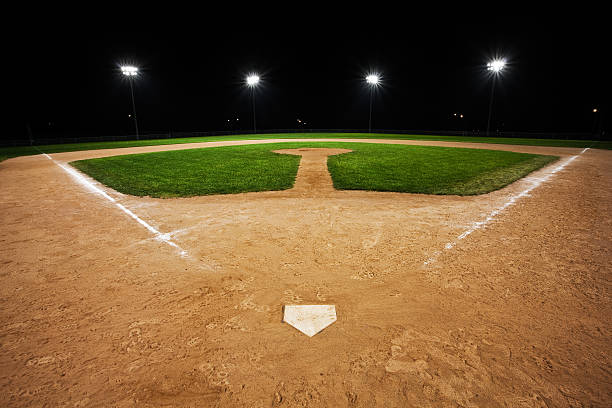
High-Efficiency Fixtures: Manufacturers are continuously innovating to develop high-efficiency LED fixtures with improved optics, thermal management, and power electronics, maximizing energy savings while maintaining lighting quality.
- Reduced Heat Emissions
Lower Heat Output: LED lighting generates less heat compared to traditional lighting sources, reducing the energy required for cooling in indoor environments, particularly in climate-controlled spaces such as offices and commercial buildings.
Cooler Operating Temperatures: LED fixtures operate at cooler temperatures, reducing the load on HVAC systems and further contributing to energy savings and carbon footprint reduction.
- Environmental Impact
Reduced Greenhouse Gas Emissions: By lowering energy consumption and reliance on fossil fuel-based electricity generation, LED lighting helps reduce greenhouse gas emissions associated with electricity production, mitigating climate change impacts.
Resource Conservation: LED lighting systems consume fewer resources over their lifespan compared to traditional lighting technologies, contributing to resource conservation and sustainable development.
Conclusion
LED lighting offers substantial energy savings and carbon footprint reduction opportunities through improved energy efficiency, longer lifespan, smart controls, daylight harvesting, and reduced heat emissions. By adopting energy-efficient lighting practices and transitioning to advanced LED lighting solutions, businesses, organizations, and individuals can significantly reduce their energy costs, environmental impact, and carbon emissions, contributing to a more sustainable and resilient future.
2. Role of LED lighting in sustainable sports facility design
LED lighting plays a crucial role in sustainable sports facility design by offering energy-efficient, cost-effective, and environmentally friendly lighting solutions. Here’s how LED lighting contributes to sustainability in sports facilities:
- Energy Efficiency
Lower Energy Consumption: LED lighting fixtures consume significantly less energy compared to traditional lighting sources, resulting in substantial energy savings over their lifespan.
Optimized Lighting Design: LED lighting systems can be customized to provide targeted illumination, minimizing energy wastage by directing light only where it is needed, such as playing surfaces or seating areas.
- Reduced Operating Costs
Longer Lifespan: LED fixtures have a longer operational lifespan and require less frequent replacements, reducing maintenance and replacement costs for sports facility operators.
Lower Maintenance Requirements: LED lighting systems require minimal maintenance, leading to additional cost savings over time compared to traditional lighting technologies.
- Environmental Impact
Lower Carbon Footprint: By lowering energy consumption and reducing greenhouse gas emissions associated with electricity generation, LED lighting helps mitigate climate change impacts and reduces the overall carbon footprint of sports facilities.
Resource Conservation: LED lighting systems consume fewer resources over their lifespan compared to traditional lighting sources, contributing to resource conservation and sustainable development.
- Improved Lighting Quality
Enhanced Visibility and Safety: LED lighting provides bright, uniform illumination, improving visibility and safety for athletes, spectators, and staff during sporting events and activities.
Better Color Rendering: LED fixtures offer superior color rendering properties, enhancing the visual experience and enabling accurate representation of team colors and branding elements.
- Smart Lighting Controls
Dynamic Lighting Control: LED lighting systems can be integrated with smart controls and sensors to adjust lighting levels and schedules based on occupancy, time of day, and environmental conditions, optimizing energy usage and reducing light pollution.
Remote Monitoring and Management: Smart lighting platforms allow facility managers to remotely monitor and manage lighting operations, identify energy-saving opportunities, and troubleshoot issues in real-time.
- Flexibility and Adaptability
Modular Design: LED lighting fixtures feature modular designs that allow for easy customization and adaptation to evolving lighting requirements and technological advancements.
Multi-Purpose Use: LED lighting systems can be used for various sports and events, offering versatility and flexibility in sports facility design and operations.
- Positive Brand Image
Sustainability Leadership: Sports facilities that prioritize sustainability and environmental stewardship through LED lighting installations and green initiatives can enhance their brand image and reputation as responsible corporate citizens.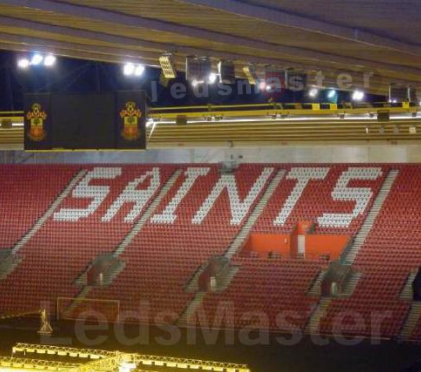
Community Engagement: Sustainable sports facilities attract environmentally conscious fans, sponsors, and partners, fostering community engagement and support for sustainable practices.
Conclusion
LED lighting is a cornerstone of sustainable sports facility design, offering energy-efficient, cost-effective, and environmentally friendly lighting solutions that enhance visibility, safety, and operational efficiency. By leveraging the benefits of LED technology and smart lighting controls, sports facilities can achieve significant energy savings, reduce their carbon footprint, and promote sustainability while providing an exceptional experience for athletes, spectators, and the community as a whole.
VIII. Conclusion
A. Summary of key points
Here’s a summary of the key points regarding the role of LED lighting in sustainable sports facility design:
- Energy Efficiency: LED lighting fixtures consume less energy compared to traditional lighting sources, resulting in significant energy savings and lower operating costs for sports facilities.
- Reduced Environmental Impact: By lowering energy consumption and greenhouse gas emissions, LED lighting helps mitigate climate change impacts and reduce the overall carbon footprint of sports facilities.
- Improved Lighting Quality: LED lighting provides bright, uniform illumination, enhancing visibility and safety for athletes, spectators, and staff during sporting events and activities.
- Smart Lighting Controls: Integration of LED lighting with smart controls and sensors allows for dynamic lighting adjustments based on occupancy, time of day, and environmental conditions, optimizing energy usage and reducing light pollution.
- Flexibility and Adaptability: LED lighting fixtures feature modular designs and versatile applications, allowing for easy customization and adaptation to evolving lighting requirements and technological advancements in sports facility design.
- Cost Savings and Longevity: LED fixtures have a longer operational lifespan and require less maintenance, resulting in additional cost savings over time compared to traditional lighting technologies.
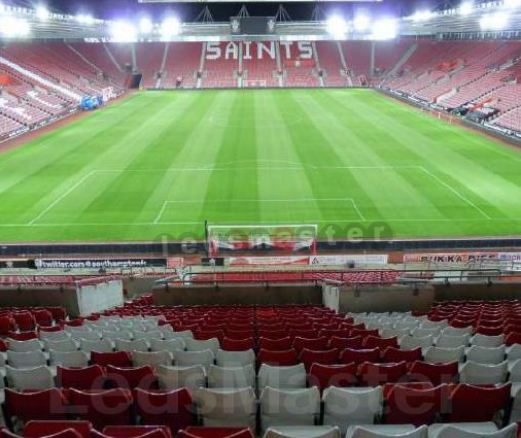
- Positive Brand Image: Sports facilities that prioritize sustainability and environmental stewardship through LED lighting installations and green initiatives can enhance their brand image and reputation as responsible corporate citizens, fostering community engagement and support for sustainable practices.
By embracing LED lighting technology and implementing sustainable lighting practices, sports facilities can achieve energy efficiency, cost savings, and environmental sustainability while providing a safe and enjoyable experience for athletes, spectators, and the community.
B. The importance of continued investment in LED sports lighting
Continued investment in LED sports lighting is crucial for several reasons:
- Energy Efficiency: LED lighting offers significant energy savings compared to traditional lighting technologies, contributing to reduced operational costs and environmental impact for sports facilities.
- Cost Savings: While the initial investment in LED lighting may be higher, the long-term cost savings from reduced energy consumption, lower maintenance requirements, and longer lifespan outweigh the upfront costs.
- Enhanced Performance and Safety: LED lighting provides superior illumination, enhancing visibility and safety for athletes, spectators, and staff during sporting events and activities, thus improving overall performance and enjoyment.
- Technological Advancements: Continued investment in LED lighting research and development leads to technological advancements such as improved efficiency, better color rendering, and smarter controls, offering even greater benefits for sports facilities.
- Sustainability: LED lighting aligns with sustainability goals by reducing energy consumption, carbon emissions, and environmental impact, thus promoting environmental stewardship and corporate responsibility.
- Regulatory Compliance: As energy efficiency regulations become stricter and environmental concerns grow, investing in LED lighting ensures compliance with sustainability standards and regulations, avoiding potential penalties and reputational risks.
- Competitive Advantage: Sports facilities that invest in state-of-the-art LED lighting systems gain a competitive edge by offering superior lighting quality, energy efficiency, and user experience, attracting more events, sponsors, and visitors.
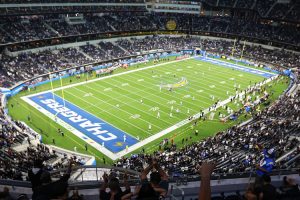
- Community Engagement: Demonstrating a commitment to sustainability through LED lighting investments enhances the facility’s reputation and strengthens community ties, fostering positive relationships with fans, sponsors, and stakeholders.
In conclusion, continued investment in LED sports lighting is essential for achieving energy efficiency, cost savings, enhanced performance, and sustainability, while also ensuring regulatory compliance and maintaining a competitive edge in the sports facility industry.
C. Final thoughts on the future impact on player performance and safety
In the future, the impact of LED sports lighting on player performance and safety is poised to be even more profound. As technology advances and innovations continue to emerge, LED lighting will play a pivotal role in shaping the athletic experience. Here are some final thoughts on the future impact:
- Optimized Performance: LED lighting’s ability to provide superior illumination and visibility will continue to enhance player performance by facilitating better reaction times, improved focus, and enhanced concentration during games and training sessions.
- Injury Prevention: The superior visibility offered by LED lighting will contribute to a safer playing environment, reducing the risk of accidents and injuries by ensuring that players can clearly see obstacles, opponents, and movements on the field or court.
- Enhanced Recovery: LED lighting systems can be tailored to support players’ recovery by providing dynamic lighting conditions that mimic natural daylight patterns, promoting better sleep, mood regulation, and overall well-being.
- Customized Solutions: With advancements in smart lighting controls and personalized settings, LED lighting will offer customizable solutions to meet the unique needs and preferences of individual athletes, further optimizing performance and comfort.
- Data-Driven Insights: Integrating LED lighting with data analytics and AI-driven adjustments will provide valuable insights into player behavior, performance trends, and injury risks, enabling coaches and trainers to make informed decisions to maximize player safety and performance.
- Sustainability and Responsibility: The shift towards LED lighting reflects a broader commitment to sustainability and environmental responsibility in the sports industry. By investing in energy-efficient and eco-friendly lighting solutions, sports facilities demonstrate their dedication to both player well-being and environmental stewardship.
- Continuous Innovation: The future of LED sports lighting is characterized by continuous innovation and evolution. As technology advances, we can expect to see even more sophisticated lighting systems that push the boundaries of performance, efficiency, and safety, ultimately redefining the athletic experience for players and fans alike.
In summary, the future impact of LED sports lighting on player performance and safety is promising, with advancements in technology driving improvements in visibility, customization, sustainability, and overall athletic experience. By harnessing the power of LED lighting, sports facilities can create environments that prioritize player well-being, enhance performance, and foster a culture of safety and excellence in sports.
–The End–

